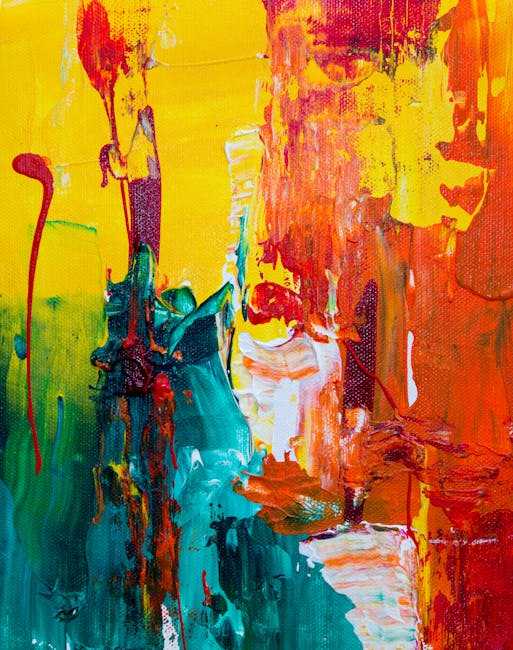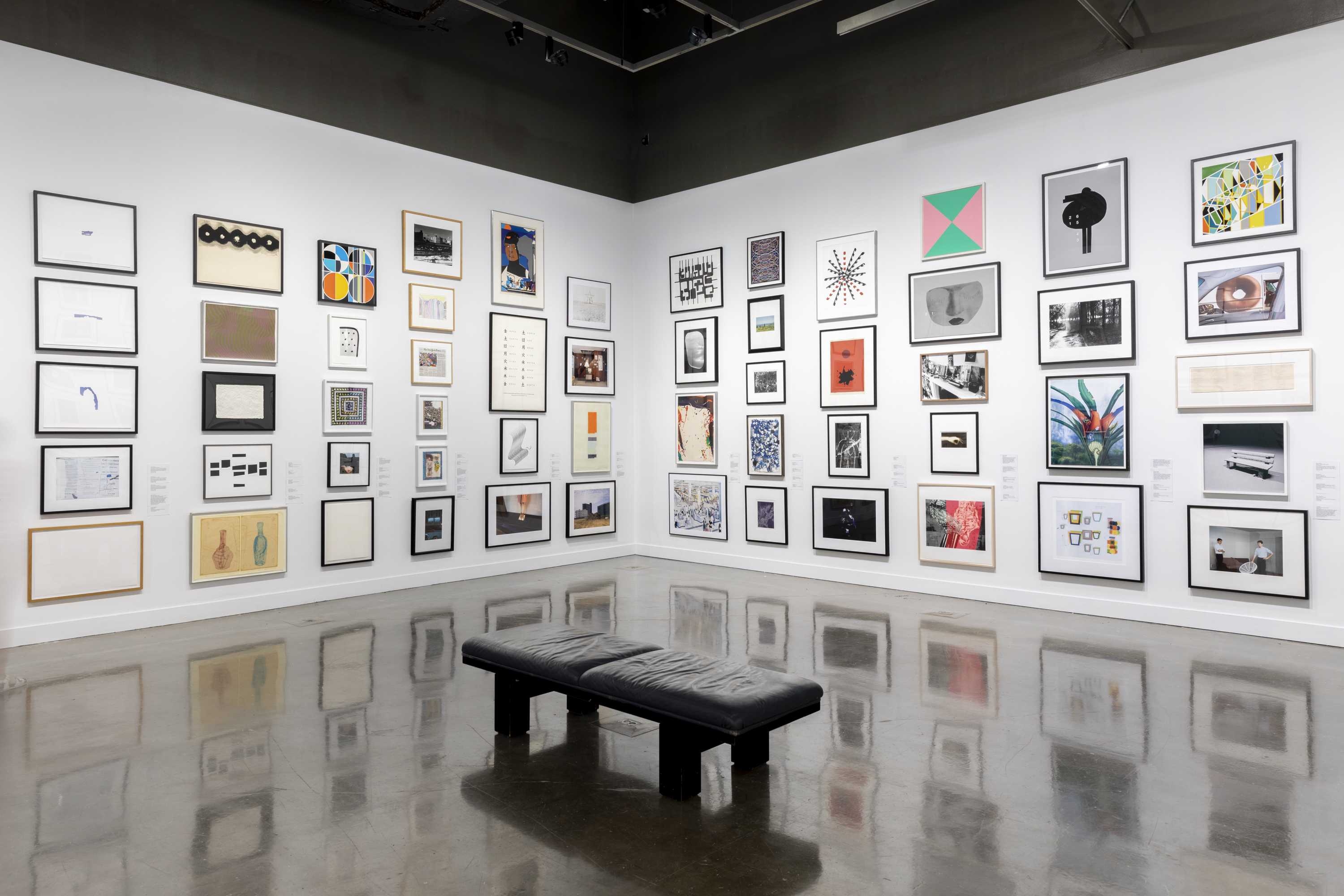Table of Contents
- Exploring the Intersection of Modern Art and Krishnas Iconography
- The Cultural Significance of Krishna in Contemporary Art Movements
- Techniques and Mediums: How Artists Interpret Krishna Today
- Art Exhibitions and Installations Featuring Krishnas Modern Representations
- Engaging with Krishna: Recommended Modern Artists and Their Works
- Q&A
- Concluding Remarks


Exploring the Intersection of Modern Art and Krishnas Iconography
Modern art serves as a canvas for the exploration of diverse cultural themes, and Krishna’s iconography stands as a luminous example of this fusion. Artists today are drawn to the symbolic richness embodied in Krishna’s representations, from the playful child with butter to the majestic figure playing the flute. These symbols resonate deeply within contemporary society, as they evoke themes of love, divine playfulness, and the eternal struggle between good and evil. By reinterpreting these images, modern artists invite audiences to engage with spirituality through a fresh lens, sparking dialogue between tradition and present-day interpretations.
Many contemporary artists incorporate key elements of Krishna’s iconography into their works, drawing parallels between ancient narratives and modern life. For instance, the use of vibrant colors that represent Krishna’s playful nature finds its place in abstract expressionism, infusing canvases with energy and emotional depth. Additionally, themes such as duality, seen in his roles as lover and protector, often inspire installations that encourage viewers to reflect on their personal experiences of conflict and resolution. This interaction between Krishna’s stories and modern artistic expressions offers a unique opportunity for cultural preservation while also promoting evolution in artistic practices.
| Aspect of Iconography | Modern Interpretation |
|---|---|
| Playfulness | Themes of joy in contemporary art movements. |
| Flute Playing | Symbol of attraction and creativity in modern works. |
| Butter Thief | Reflections on indulgence and human nature. |
| Divine Protector | Explorations of guardianship and moral dilemmas today. |
Additionally, the integration of technological mediums in modern art presents exciting possibilities for reinterpreting Krishna’s narratives. Artists experiment with digital installations, animations, and interactive exhibits that breathe new life into these age-old stories. For example, a video installation might depict the dance of Krishna and the gopis, inviting viewers to participate in the experience rather than merely observe. This lively engagement not only modernizes the context of Krishna’s iconography but also enriches the connection between modern art and traditional themes, resulting in a dynamic cultural dialogue that appeals to both art aficionados and spiritual seekers alike.
The Cultural Significance of Krishna in Contemporary Art Movements
The enduring figure of Krishna, revered in Hindu culture, has found a fresh canvas in contemporary art movements. Artists increasingly draw inspiration from his multifaceted character, depicting not just his divine playfulness but also the deeper philosophical themes he embodies. This artistic endeavor allows for an exploration of *dharma*, love, and the delicate balance between joy and suffering, resonating with modern societal issues. Through innovative mediums, creators engage new audiences, facilitating a change in perception about traditional narratives.
Moreover, Krishna’s representation in art often transcends cultural boundaries, inspiring a melange of influences that reflect global issues. For instance, many modern artists use colorful visual narratives that merge traditional styles with contemporary techniques such as street art and digital media. This fusion not only broadens the appeal of Krishna’s imagery but also prompts viewers to engage with the content on multiple levels, including:
- Spirituality in a secular world: Highlighting the relevance of divine figures in contemporary discussions on ethics.
- Identity and representation: Addressing the complexities of cultural heritage in modern contexts.
- Environmental awareness: Linking Krishna’s connection to nature with modern ecological concerns.
The impact of Krishna in contemporary art opens the door to public dialogues about faith, heritage, and personal identity. Exhibitions frequently invite audiences to reflect on their own beliefs and values, creating a dialogue that can sometimes alter societal narratives. The art world serves as a dynamic arena where viewers can appreciate traditional motifs while embracing experimental interpretations that speak to the essence of what it means to connect with the divine in today’s fast-paced, interconnected world.


Techniques and Mediums: How Artists Interpret Krishna Today
In the realm of modern artistry, Krishna is depicted through a vibrant tapestry of techniques and mediums that reflect contemporary society’s ethos. Artists today often embrace mixed media approaches, combining traditional painting with photography, digital art, and sculpture to convey nuanced interpretations of Krishna’s multifaceted personality. By integrating different materials, such as metal, cloth, or even everyday objects, they create immersive experiences that resonate with viewers on multiple levels. This reflects a shift from classical representations to a dialogue that speaks to modern spiritual and cultural narratives.
Another prominent technique utilized by contemporary artists is abstract representation. Through bold colors and fluid forms, artworks capture the essence of Krishna’s divine playfulness and cosmic significance without strict adherence to realism. This abstraction allows for a personal connection, inviting the audience to engage their imagination and emotions. Artists might experiment with digital illustrations, transforming traditional motifs into dynamic visuals suitable for animation or interactive media, catering to a younger, tech-savvy audience.
The choice of medium is equally vital in these modern interpretations. Artists are now exploring unconventional materials, such as recycled goods or technology-driven installations, to infuse their works with social commentary. For instance, some have turned to installation art, which not only showcases Krishna’s stories but also immerses viewers in environments that challenge their perceptions and encourage reflection on their spiritual journeys. With these varied approaches, modern artists are not only redefining the figure of Krishna but also expanding the audience’s encounter with divinity in today’s world.


Art Exhibitions and Installations Featuring Krishnas Modern Representations
Contemporary art installations have begun to reimagine the iconic figure of Krishna, utilizing vibrant colors and innovative materials to convey his multifaceted nature. Artists explore themes of love, mischief, and divine play, offering audiences an immersive experience that goes beyond traditional representations. Interactive exhibits, such as virtual reality experiences or augmented reality applications, invite visitors to engage directly with the essence of Krishna, transforming the viewer’s perception of divinity in modern contexts.
Notable themes in these exhibitions include:
- Cosmic Play: Exploring Krishna’s role as a playful deity through kinetic art and performing installations, capturing the whimsical essence of his character.
- Moral Choices: Interactive installations prompting viewers to consider their own dilemmas and choices reflecting Krishna’s teachings.
- Urban Context: Street art and murals portraying Krishna in contemporary settings, highlighting the relevance of ancient narratives in today’s world.
In one particularly groundbreaking exhibition, artists collaborated to create a multimedia showcase that blends installations with live performances, offering a sensory experience unlike any other. Attendees can find themselves walking through a space that bridges the past and present, with live music and dance performances enhancing the visual storytelling. The following table compares three significant installations that feature modern interpretations of Krishna:
| Installation Name | Artist | Medium | Location |
|---|---|---|---|
| The Dance of Chaos | Ravi Kumar | Kinetic Sculpture | Mumbai Art District |
| Krishna: City of Dreams | Aisha Patel | Mixed Media | Delhi Contemporary |
| Echoes of the Flute | Sankar Dutta | Digital Installation | Kolkata Art House |


Engaging with Krishna: Recommended Modern Artists and Their Works
Modern artists have beautifully reinterpreted the essence of Krishna, blending traditional themes with contemporary techniques. One notable figure is Anjolie Ela Menon, whose vibrant use of color and dynamic forms bring the tales of Krishna’s life to the canvas. Her piece “Yashoda’s Love” showcases the tender bond between Krishna and his mother, encapsulated within a mix of impressionism and Indian motifs, inviting viewers to connect deeply with their own familial ties.
Another artist to explore is Ramesh Gorjala, known for his intricate and vibrant depictions that honor Krishna’s divine leelas (pastimes). Utilizing traditional Indian art forms like Pattachitra, Gorjala’s work, “Krishna as a Flute Player”, employs a striking palette and detailed storytelling, capturing Krishna’s essence in a way that resonates with both tradition and modernity. This fusion creates a dialogue between the past and the present, inviting art enthusiasts to experience Krishna’s timeless charm.
| Artist | Signature Work | Style |
|---|---|---|
| Anjolie Ela Menon | Yashoda’s Love | Contemporary Impressionism |
| Ramesh Gorjala | Krishna as a Flute Player | Pattachitra |
| Vikram Pithwa | Krishna with Radha | Modern Abstract |
Lastly, we cannot overlook Vikram Pithwa, who presents a fresh, abstract perspective on Krishna. His work “Krishna with Radha” uses geometric shapes and bold color blocks to symbolize the divine interplay between the two characters, evoking a sense of spiritual connection through minimalism. Each piece provokes thought about the significance of love and devotion, blending contemporary aesthetics with the timeless nature of Krishna’s stories.
Q&A
Q&A: Exploring Modern Art Depictions of Krishna
Q1: What is the significance of Krishna in modern art? A1: Krishna, one of the foremost deities in Hinduism, represents love, compassion, and divine playfulness. In modern art, artists often reinterpret these qualities, infusing traditional themes with contemporary perspectives. This evolution invites audiences to experience Krishna’s stories anew, reflecting personal interpretations and broader cultural narratives. Q2: How have contemporary artists chosen to represent Krishna differently from traditional artists? A2: Contemporary artists often break away from traditional representations, employing a variety of mediums and styles. While traditional art may rely on rigid iconography, modern art exhibits abstraction, mixed media, and even digital forms. This shift allows for more personal and sometimes provocative expressions of Krishna’s character, making the spiritual accessible to a wider audience. Q3: Can you give examples of modern artists known for their Krishna-themed works? A3: Several modern artists have made significant contributions to Krishna-themed works. For instance, the Indian painter M.F. Husain is renowned for his bold, vibrant representations of Krishna that blend tradition with modernity. Similarly, contemporary sculptor Subodh Gupta utilizes materials like stainless steel and found objects to create installations that evoke Krishna’s multifaceted identity. Q4: What themes are commonly explored in modern art related to Krishna? A4: Modern interpretations of Krishna often emphasize themes such as love and devotion, the duality of human experience, and nature’s beauty. Many artists explore the playful aspects of Krishna’s persona, as well as his role as a divine protector. These themes resonate with contemporary issues, allowing audiences to connect personal experiences with ancient stories. Q5: How does modern art about Krishna engage viewers today? A5: Modern art featuring Krishna invites viewers to engage on multiple levels. The diverse styles and interpretations challenge audiences to think critically about spirituality, culture, and identity. By presenting Krishna in innovative ways, artists create a dialogue that inspires reflection and emotional connection, transcending cultural boundaries. Q6: What impact does modern technology have on the representation of Krishna in art? A6: Modern technology plays a pivotal role in the representation of Krishna in art. Digital mediums allow for experiments with virtual reality and multimedia installations, providing immersive experiences that traditional forms cannot. Furthermore, social media platforms facilitate the sharing of artworks, broadening the reach of Krishna-themed modern art and inviting global conversations. Q7: How does one appreciate modern art depicting Krishna? A7: Appreciating modern art centered around Krishna involves an open mind and willingness to engage with the work beyond its surface. Observing the emotions conveyed, understanding the context of the piece, and reflecting on one’s personal connection to the themes can lead to a deeper appreciation. Engaging in discussions, attending exhibitions, or reading artist statements can enrich the experience even further.This Q&A format not only addresses common queries about modern art representations of Krishna but also aims to provoke thought and inspire engagement with both the art and the divine.
